Ever had a vision of your future that was so colossal it scared you? Something so massive it seemed impossible?
I’ve spent a lot of time pondering that idea and how such imagining needs to become more common for everyone in the world — and what I can do to help make it a reality! Especially in the past couple of years.
When James and I were 20-something’s…
…before we were even a couple, neither of us were keen on buying a house. Ever. We didn’t realize we shared that disinterest until later. It’s not that we were against the idea of owning a home, it’s just that none of the cookie-cutter houses we saw sparked any excitement in us. None of them seemed worth a lifetime of payments.
After being together for a year or two, we decided to hit the road for a trip together. Starting from our base in Los Angeles, we journeyed through Vegas (too noisy for both of us, given my past there), then onto Bryce Canyon, the Grand Canyon, and finally to Sedona, Arizona, where we set up camp for a week.
On our way to hike a trail and climb one of Sedona’s famous rock formations, “Bell Rock,” we stumbled upon a local gem called “Xanadu House.” It was a 63-acre ranch with these incredible monolithic structures that you could tour.
By the way, it’s pronounced zan-ah-doo.
At the time, there were five domes on the property that circled around a little garden area in the middle with trails from dome to dome. It blended seamlessly with the surrounding red, brown, and golden hues of the desert. Nowadays, they’re painted in Easter-egg colors, standing out more, but to me, they were way more beautiful back then.
We were completely captivated by these structures and just had to stop for a quick tour.
The day we visited, it was a scorching 112 degrees outside. Inside the house, it was a cool 72 and James couldn’t believe it. James asked the guide how they kept it this cool and our guide told us, “There is no air conditioning. It stays cool due the way this building is put together and the materials used in the process.” Our jaws dropped on the floor (metaphorically speaking of course!)
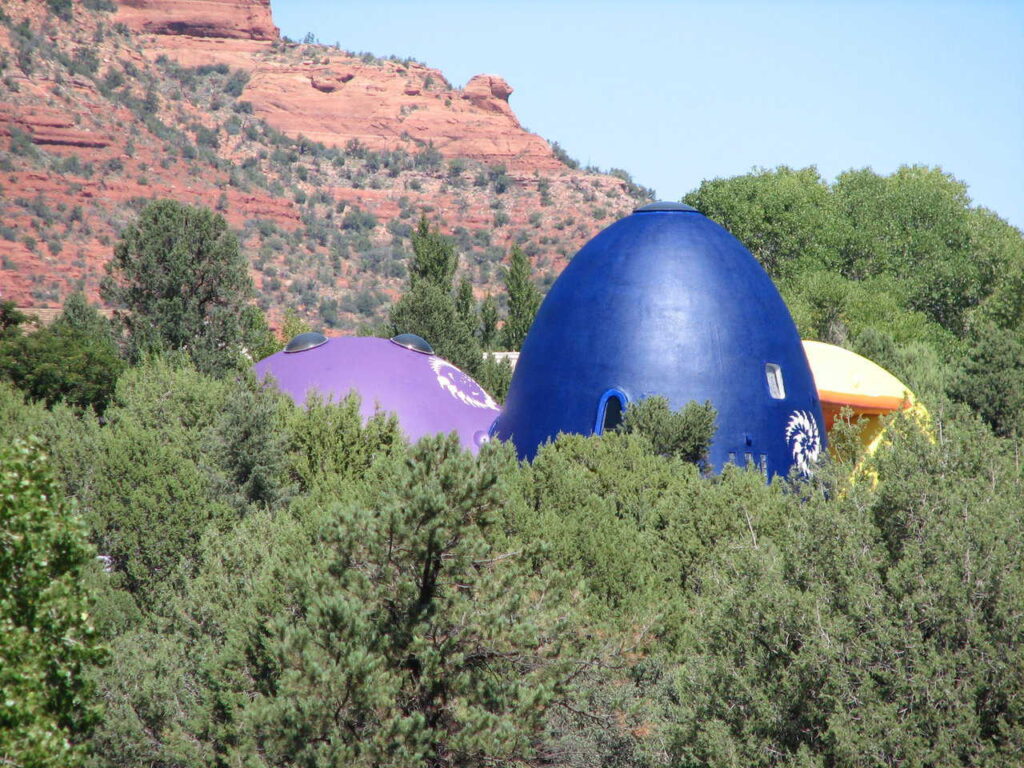
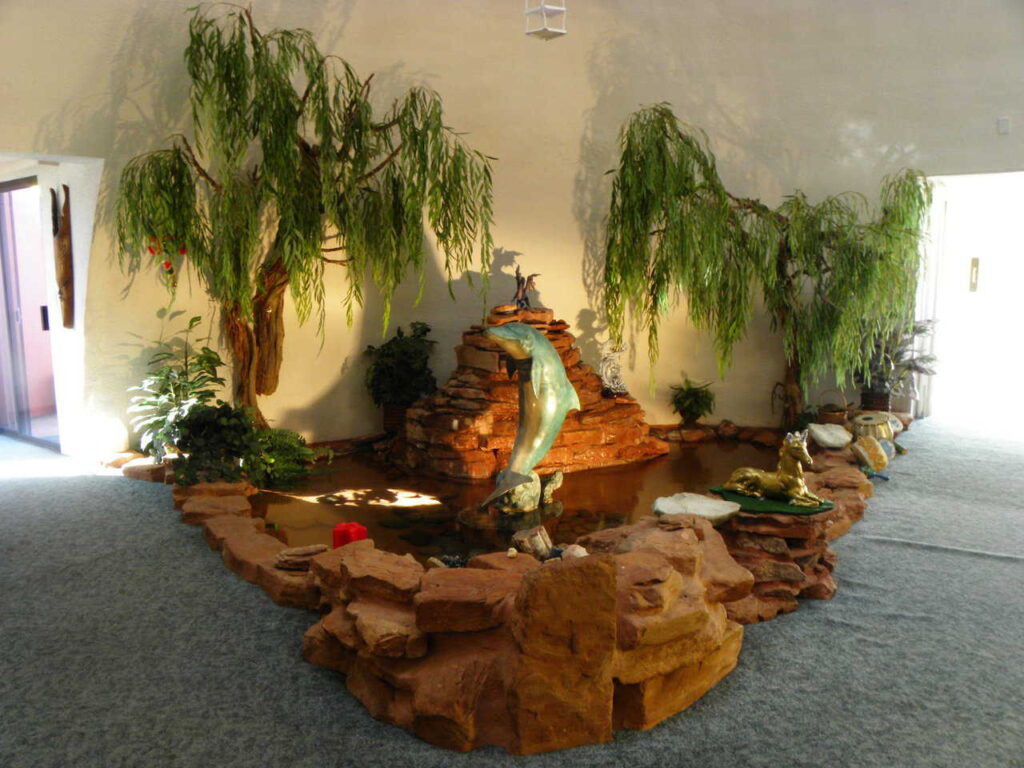
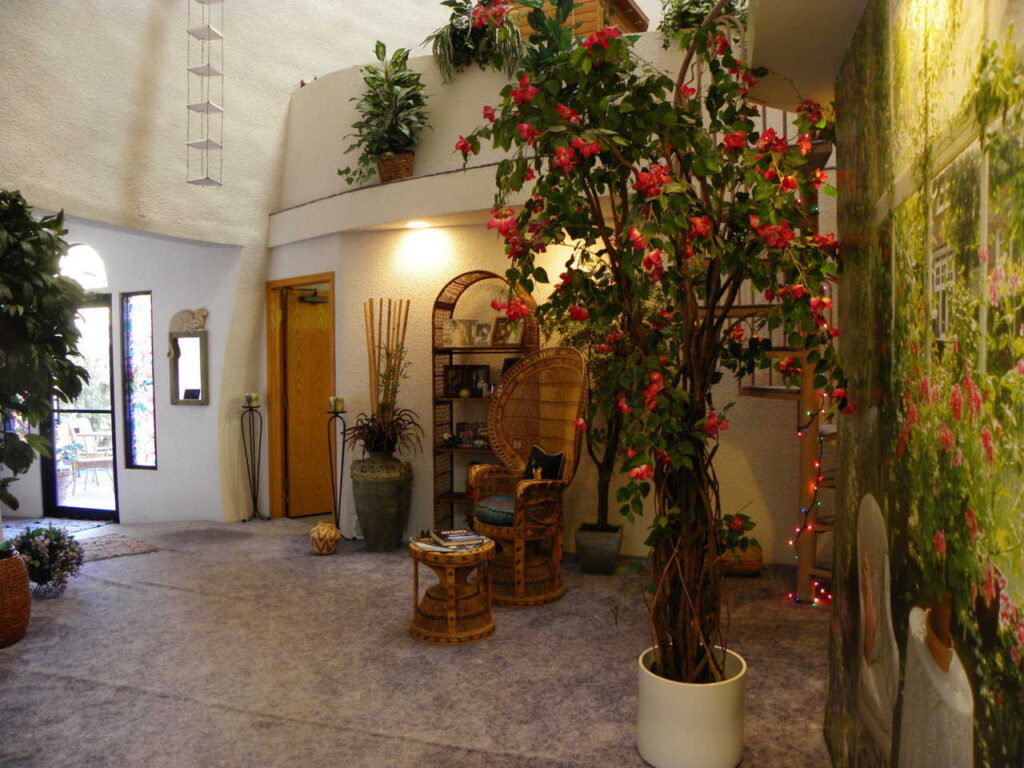

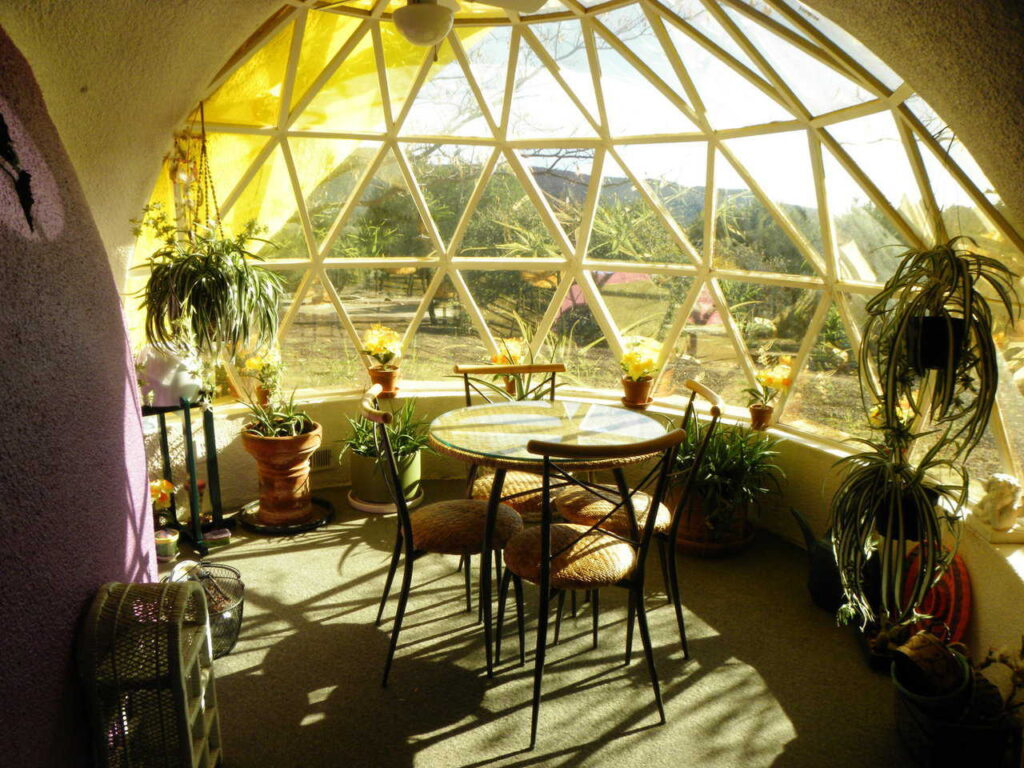
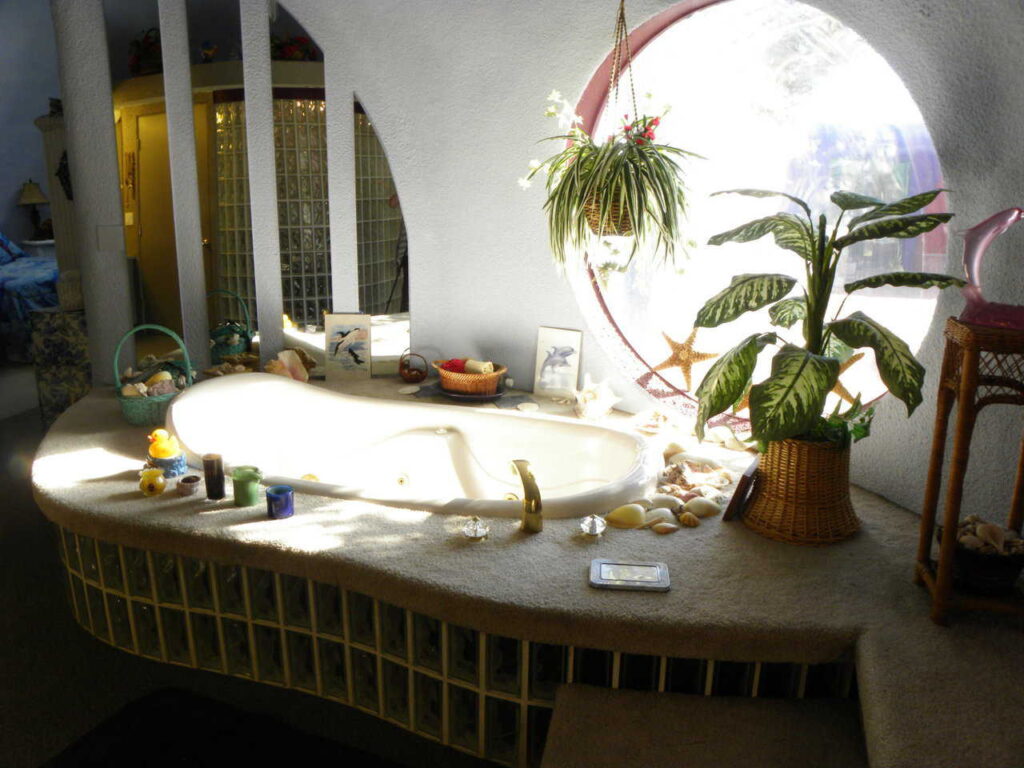
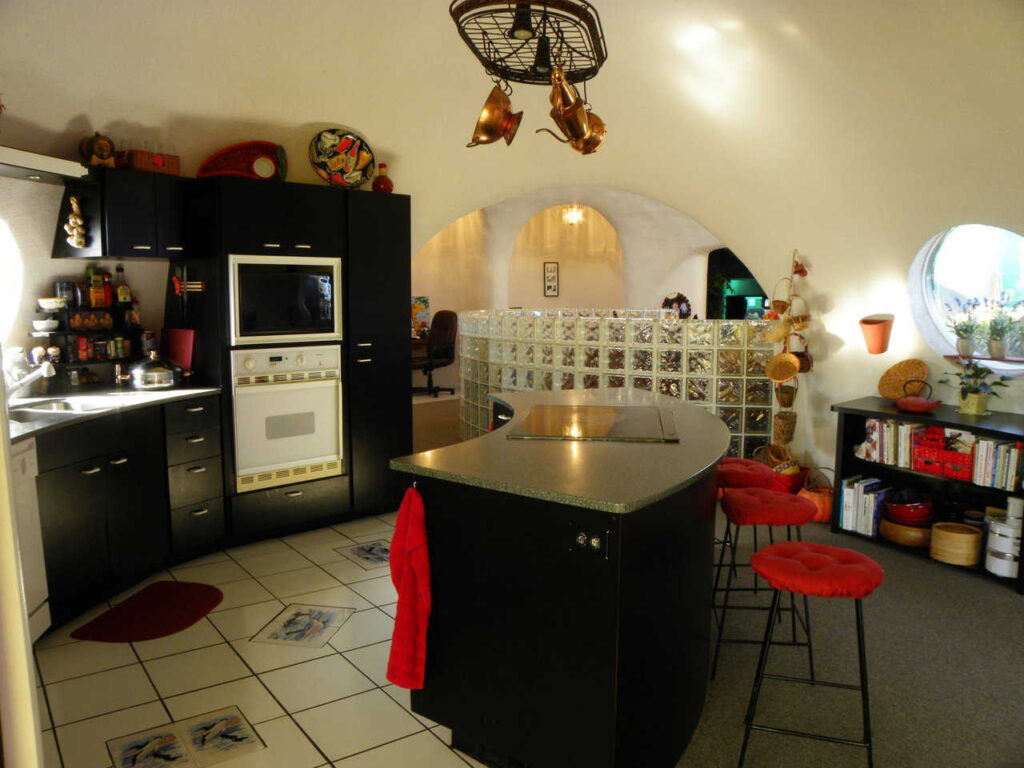
We were smitten!
I put a link at the bottom of this article to view more pictures and to learn more about the Xanadu House.
The shape and material of the house — primarily concrete — meant it could save up to 90% on heating and cooling costs throughout the year. Energy efficiency was one big selling point that the company behind these structures wanted the public to experience.
We were head-over-heels from the moment we stepped inside — not just by the location but with the concept of a monolithic living space.
There are countless incredible stories about monolithic domes from people all over the world. They’ve weathered tornadoes, hurricanes, fires, earthquakes — you name it. And when built correctly, they’re virtually impervious to common issues like rot, mold, and pests.
So, yeah, we became obsessed with all things monolithic after that visit.
As we went deeper into our research journey and gained a better grasp on alternative building styles, materials and design, we stumbled on all sorts of monolithic structures, many that don’t require concrete. That’s when we discovered straw-bale and cob — but it all traces back to that day and that tour through the Xanadu House.
Over the years, these kinds of buildings have gained more acceptance and understanding in the United States, but…
There’s still a long road ahead.
One of the biggest challenges with alternative building in the U.S. is finding a spot in an unincorporated area with minimal regulations from HOAs or local building codes. It’s a bit of a minefield.
You see, in unregulated areas, no one is breathing down your neck to ensure you do the right thing by your neighbors or yourself. Freedom is a wonderful thing, but not everyone knows how to handle it. Some folks have no internal compass, no sense of responsibility and zero interest in being good neighbors. They might use their property as a dumping ground for toxic waste or let it become a junkyard. It’s not pretty.
Finding affordable property in an unregulated county that doesn’t have neighbors who couldn’t care less about their surroundings can take time but it’s possible! It takes effort and some legwork and is well worth it.
We thought we hit the jackpot…
We found a beautiful piece of land in Missouri, only to find that a neighboring property was buried under piles of trash. Because it was an unregulated area, nothing could be done about it as long as they only trashed their own land. The property we went to see was as beautiful as it was in the brochure — but that situation was a hard pass for us.
Commonsense would seem to dictate that trashing your own place isn’t smart — but commonsense isn’t always common. Hopefully, commonsense will rise in the days ahead and the tendency not to care will become less common!
Thankfully, our property in Arkansas is in an unincorporated area where we can build what we want without jumping through hoops. No permits or permission needed at all. And our neighbors actually take pride in their land, which is a huge plus.
After more than a decade of exploring alternative building methods and materials, we were eager to finally put those ideas into action on our land.
Our passion to build things that will still be standing 100 years from now hasn’t waned. We want a home that is cost-efficient, energy efficient and — to us — beautiful.
Our plan includes building several small cabins on the land to serve as vacation spots for friends and family, and maybe even host workshops to teach others how to build the same way. It’s part of our dream for sure.
While building codes are important for safety, some aspects of today’s requirements and permit processes have become unnecessarily burdensome, driven more by politics and bureaucracy than genuine concern for safety.
Let’s talk abut fire hazards for a sec.
A stick-built house has a whopping 35 times higher fire hazard compared to a straw-bale/cob hybrid. That’s crazy, right? BUT — most building departments are clueless about this fact and yet they have the power to shoot down a straw-bale home project without a second thought.
Now, everybody knows that straw burns fast. Your average building code department would immediately write off the idea of using straw in construction. What they don’t know is the first straw-bale homes in the U.S., dating back to the 1870s and 1880s were in Nebraska and are still standing strong today. They’re practically fireproof once they’re built.
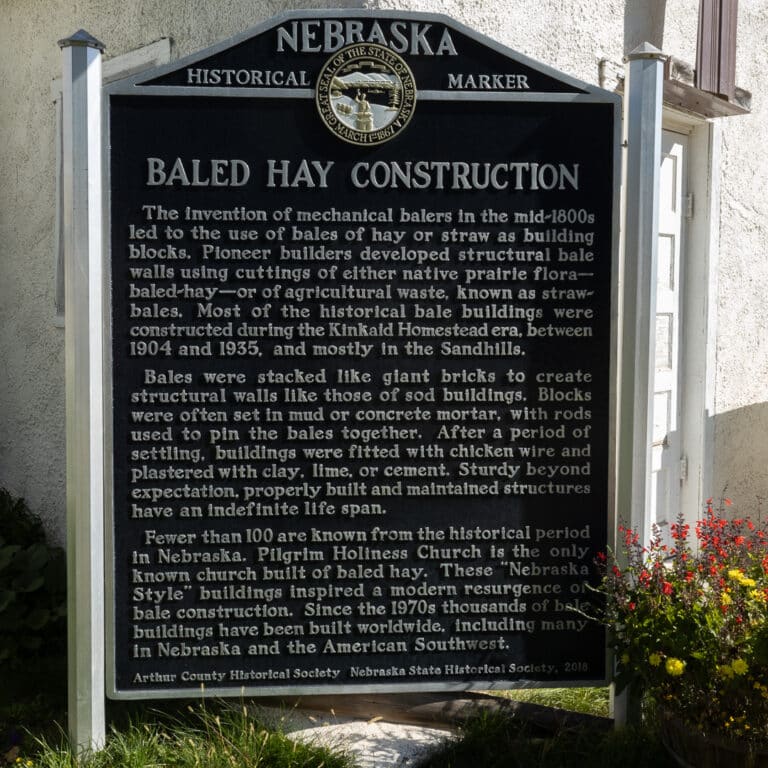

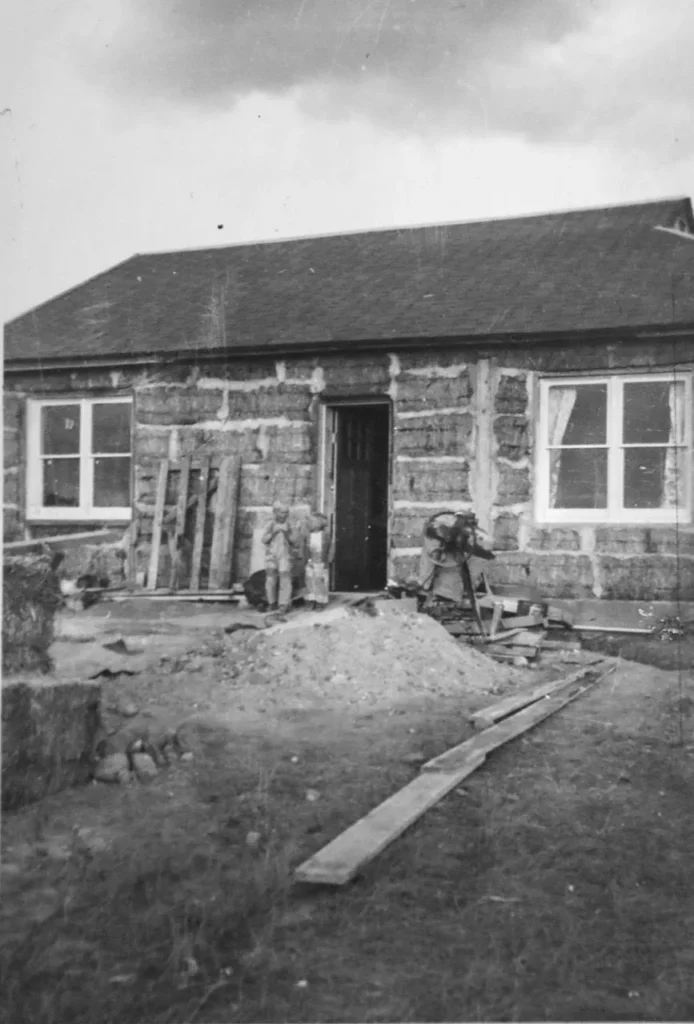
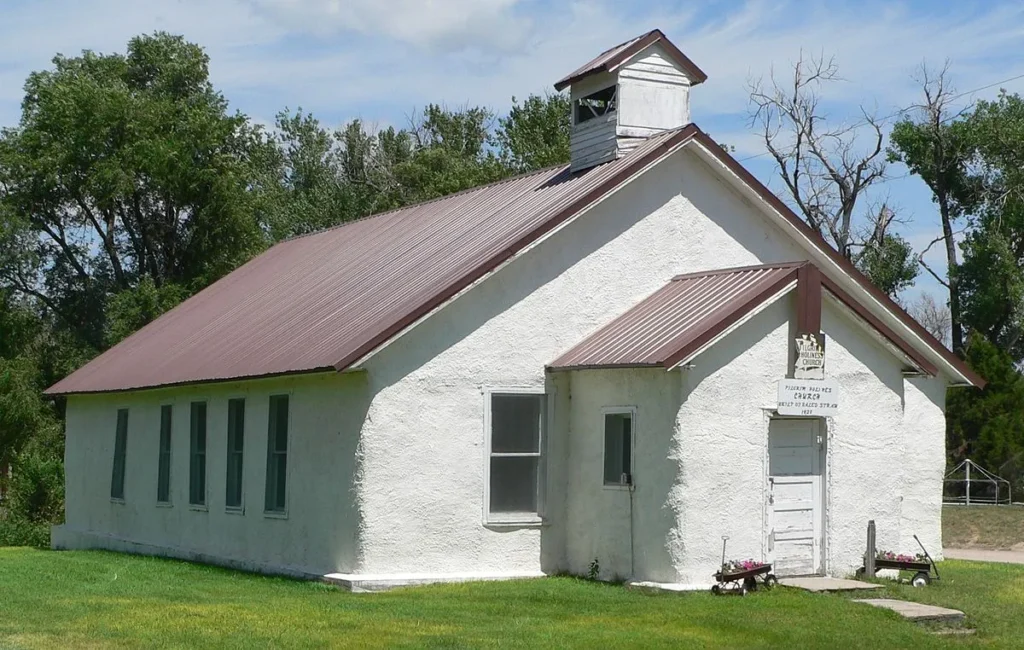

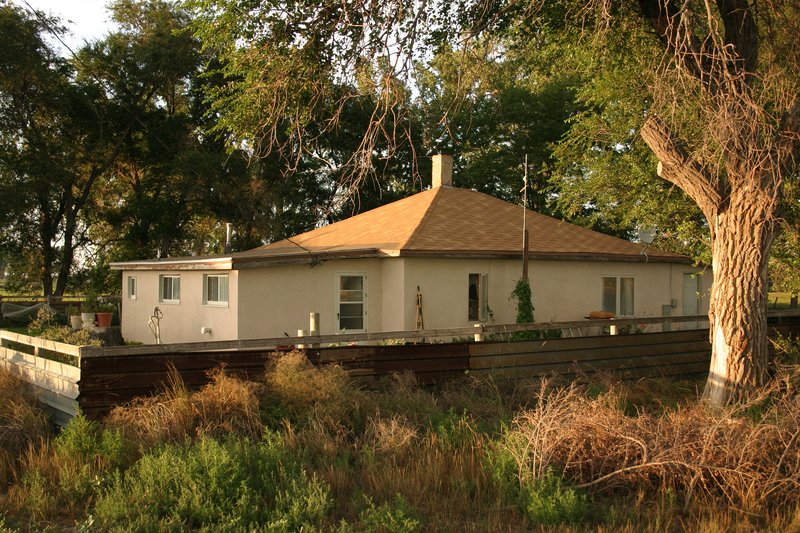


Take the “Haslow House” in Nebraska, for example. It’s still sporting its original 1913 stucco coat, with walls almost two feet thick made of baled hay. During a tornado, while the town was getting ripped apart, the folks inside were chilling, playing cards like nothing was happening. That’s the kind of insulation and soundproofing you get with bales. One house that was left un-stucco’d did eventually fall into ruin… because cows ate it!
These homes weren’t just a thing in Nebraska; they spread across Europe too, where you can still find them being lived in over a century later.
Quick story to make a point…
When James and I were scouting for property in Missouri and Illinois, I found a sweet little lot near my parents’ place. These were two vacant lots, inside the city limits of Granite City, Illinois — but the price was right, and the spot was really nice. I wondered, would the local building department entertain the idea of a straw-bale structure?
I called and spent hours on the phone with a building department rep, laying out the case for straw-bale buildings. Surprisingly, he was open to it — even got excited about it — and invited us to a council meeting to chat about it.
But here’s the kicker: we had to buy the property first, and then hope they’d give us a green light. It could’ve taken ages for them to decide.
In the end, we realized we’d have to school the entire building department on something they knew nothing about. Even if our straw-bale house would’ve been the belle of the block, they still might’ve nixed it. Local officials aren’t exactly known for taking chances, you know? And no offense intended to local officials it’s just most local regulatory bodies could do better!
Educating building departments has worked in some Western states, where straw-bale and cob homes are more common, but it takes time.
Instead of rolling the dice with the Illinois building department, we decided to go with the Arkansas property where no permits or permission would be needed and we could get started right away.
And on April 9, 2020, we made the biggest purchase of our lives.
The next day, lockdowns hit Missouri and Arkansas, and the courthouse where our paperwork was sitting closed up shop.
We thought we’d be on our newly acquired land within weeks. Instead, it took ONE year, FIVE months, and TWENTY-SIX days before we were finally able to pull on that property with our truck and trailer.
That my friends, is what you could call an unexpected delay…
Unable to officially claim our property was just one hurdle we faced when lockdowns hit. The larger issue was a massive 5-foot ditch that stood between the county road and our land. Even if we could sort out the title issue, that ditch would still be a showstopper. Getting our truck or trailer onto the land? Impossible.
In the early lockdown months, we focused on what we could control.
We hunted for a decent truck and trailer. I spent months building out the front 8 feet of the trailer as a comfy living space — leaving the back 16 feet unfinished to haul stuff once we had a barn or cabin. Thankfully, I was able to use PappaBear’s garage-slash-workshop for the job while we were at the Bear’s house. Don’t know what I would’ve done without it.
The Bear’s house finally sold, and the estate sale wrapped up 14 months from the time we started. We went to the house with the idea we’d have it all wrapped up in a few weeks… so 14 months later wasn’t what you’d call a tiny delay!
On June 28, 2021, we packed up the trailer with water totes, tools, and work gear, ready to tackle some serious dirt work on our Arkansas property. We needed to have a driveway cut and a clearing, then set up the trailer, install compost bins, and get the barn built. After that, we planned to head back to St. Louis, fetch our stuff from storage, and move onto the property for good.
Speaking of the barn, we decided on a bow-roofed arched barn. That’s kind of like an upside-down boat. Easy to build, super strong in the roughest weather, and cheap as chips. Ours was planned to be 40 feet long, 24 feet wide, and 14 feet high — a size two people can easily build.
Bow Roofed Arched Barns…
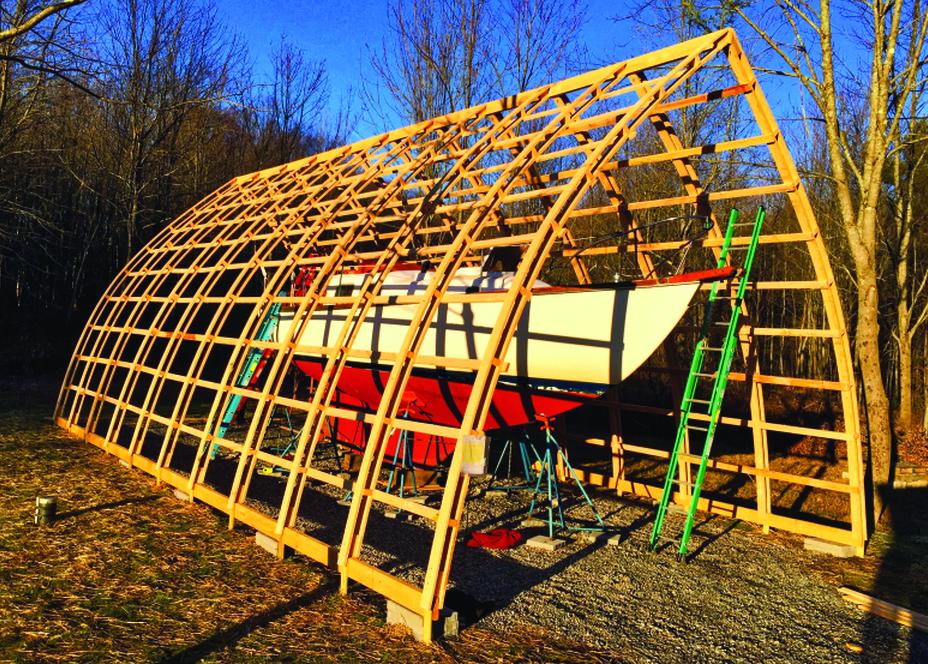

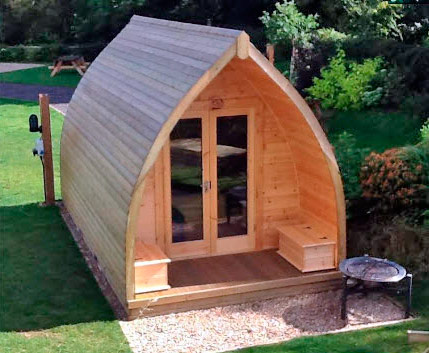

Bow-roofed arched barns use trusses spaced a few feet apart to form the sides and roof, making them quick and affordable to put up. The ends can be finished any number of ways. We were going with metal siding, a breeze to install once the arches are in place.
Now, onto the surprises!
SURPRISE #1
On the drive down to Arkansas, I rang up every RV park within a 50-mile radius, only to find zero vacancies.
Then, after a week of parking our truck-and-trailer wherever we could, we hit a brick wall with finding a dirt work outfit to do our driveway and clearing. Not only were prices sky high, but everyone was booked solid, thanks to a plandemic-induced population boom.
SURPRISE #2
To top it off, we ended up in a rather uncomfortable conversation with the convenience store owner who had kindly let us stay in his parking lot for a few days. When he saw we had our solar panels out in the grass, next to the trailer, he thought we were using his generosity to make money selling them in his parking lot!
But here’s what actually happened…
After days of fruitless searching for help with the land, we were sun scorched, exhausted and desperate for a shower. The battery in the trailer was low so we had to put our solar panels out to have enough power for lights and a shower that night. The store owner thought we were selling something and was ready to call the sheriff!
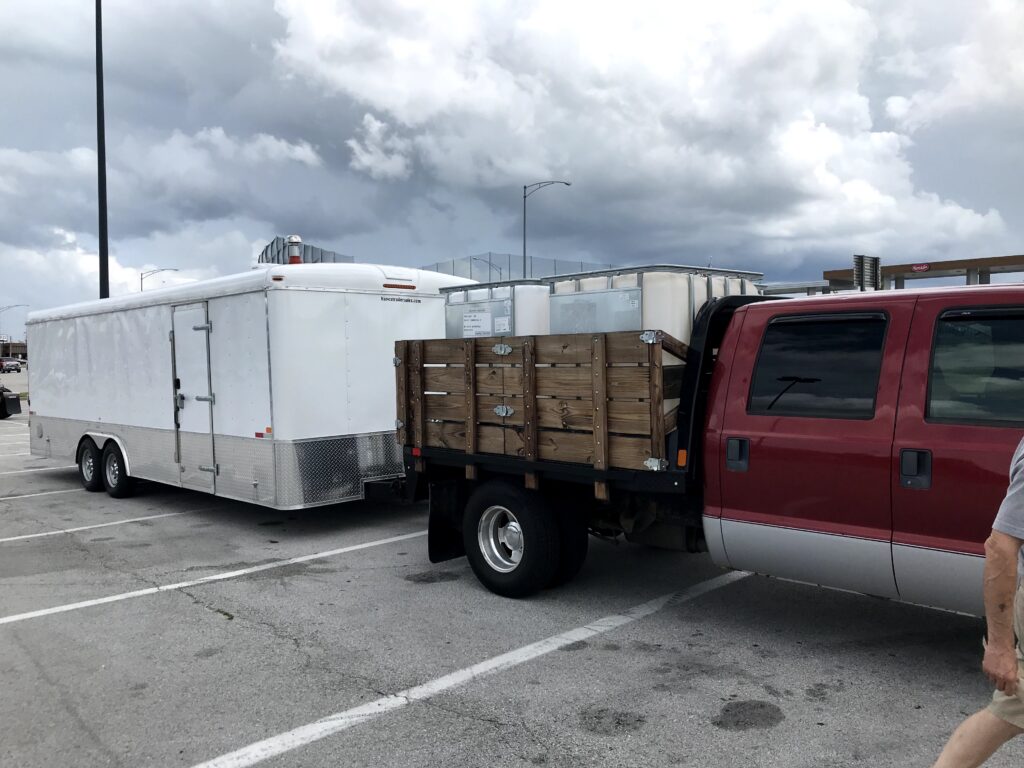
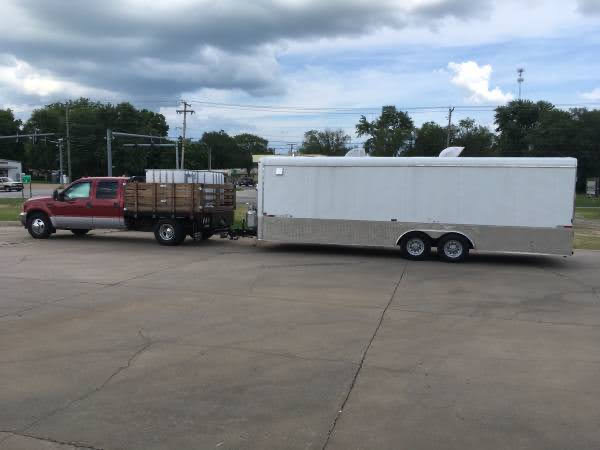

That — was NOT the start I had in mind for life in our new community!
Thankfully, after some explaining Tom (the store owner) reached for his cell phone saying, “OK, I know a guy. Let me see if I can get him on the phone.” We scored a meeting with Andy, a dirt work contractor.
After we met with Andy the next morning, more good news came down the pipe line when a spot opened up at a tiny RV park a few miles down the road. Thankfully! We would no longer be stuck being mistaken for parking lot vagabonds — or continue to be the topic of local gossip! It felt like we were moving forward for the first time since landing in Arkansas.
Our meeting with Andy was short and to the point. We scoped out the property together and roughly outlined the driveway and clearing. Due to his schedule, Andy had no idea when the work could get done but he would definitely fit us in somehow.
Meanwhile, back at the RV park, I started scouting for barn materials. Lumber prices had gone through the roof since we priced things out in 2020. Our budget — for the whole project — was $2,500, which included the foundation, the wood, fasteners, metal siding and all necessary tools. Once we got to Arkansas, in the middle of a the chaos going on in the world, our BARN BUDGET suddenly ballooned to well over $10,000, if we went with the kiln dried lumber at Home Depot’s prices of $14.00 for each 2×4.
We found a local mill that could deliver everything we needed for $975 and do it within 2-3 weeks. It would mean working with green wood but we could work around that to avoid Home Depot’s highway robbery prices on wood they should’ve been giving away for the shape it was in!
So, there we were, rolling with the punches and inching closer to our dream, one surprise at a time.
SURPRISE #3
The day we met Andy for the first time — and walked our property together to roughly lay out the driveway and clearing — he didn’t mind letting us know that our job was really a favor to Tom. It was too small. Our 30 acres were nothing compared to the six figure projects he had going with doctors and professional people moving in from Cali and elsewhere. These people had thousands of acres, big budgets and a team of architects in tow.
We were not in that category. We knew that and had no problem with it. It was just an odd conversation to have with someone you’re counting on to do a job. He wasn’t trying to be rude — exactly — he was just stating the facts as he saw it. Nevertheless, we were relieved to be moving toward getting on the land.
The dirt work did eventually get done. Andy’s crew carved out a 400-foot driveway, they popped in a culvert to fill the ditch, and cleared half an acre for a build site.
We missed the action, though.
Andy squeezed us in during a lunch break and only gave us a heads-up when the job was almost wrapped. A bit of a letdown. We had a few tweaks in mind that we would’ve made if we were on-site.
But this was only the beginning. The house would be further back on the property anyway. We’d have the time to fine-tune the layout once the plandemic madness settled down, right?
We did catch the last bit of action that day as Jimmy, the dozer operator, pushed the final tree down and shoved it into a massive pile of trees complete with root balls, dirt and boulders.
We did get to meet Jimmy, for a quick chat before he packed up. He mentioned he didn’t have time to grade that day but would try to get back if it was OK’d by Andy. He apologized several times for not grading before leaving.
We did not grasp the significance of what Jimmy said and why he kept apologizing. It went right over our heads.
Turns out… that grading is absolutely NOT an option. Forest soil left untouched for 100 years, turns into a mess when it gets stirred up. And grading is essential to level it out, fill the holes, clear away debris and pack the soil.
We had no idea how much that little detail would matter in the weeks and months ahead. How it would keep us from getting on the property for almost five months and the cost… that’s a whole other thing.
So, we headed to the RV park to prepared to move. We were excited.
BUT — that night, the skies opened up, and the rain poured for a solid week.
SURPRISE #4
Chomping at the bit to test our new driveway — the rain finally took a breather and we made our way to the property with only the truck. No trailer. We had no idea what we might find.
James rolled off the county road onto our newly installed culvert, packed solidly under many loads of river rock. It was solid as could be!
As James rolled beyond the entrance — onto the newly cut ungraded driveway — our 10,000 pound beast-of-a-truck made it 1/3 of the way up the driveway and started sliding back and to the right, heading for a big oak tree.
We didn’t hit the tree. Thankfully.
BUT — we also never made it to the top of the driveway.
We were able to get back on the county road (long story) and made our way to the RV park and to the showers to clean off the mud we both wore from head-to-toe.
THAT is what NOT grading produces.
We kept going to our land in the days ahead. We parked on the culvert and went on foot to figure out ways to get up that driveway.
We tried everything — we put a dozen bales of straw down, wood chips, collected small rocks by hand and threw as many as we could reasonably gather onto the driveway — and nothing worked. And Andy, our dirt work guy? He was MIA. We had a driveway that might as well have been a mudslide.
As the rain kept coming, rocks kept growing out of the ground everywhere. These were no ordinary rocks — they were behemoths. They were stubbornly embedded in the soil and jutting out of the ground in every direction. Some could easily puncture a tire. Those puppies could put holes in the bottom of the trailer if we even tried it.
We. Were. Stuck.
SURPRISE #5
Not sure if I have mentioned yet that when I built out the front of the trailer for our temporary living space — I didn’t install air conditioning. It didn’t make sense at the time since (a) it was winter time when I built it! and (b) it was going to be temporary. If you’re wondering the answer is YES! — I was regretting that oversight once we were in Arkansas. The inside of the trailer reached 100+ degrees on a daily basis through the summer.
Sitting in the RV park in the sweltering heat with on-again-off-again rain showers — the phone finally rang.
It had to be Andy… right?!
Uh… no.
It wasn’t Andy but it was another dirt work contractor.
We left messages for a slew of companies those first few days in Arkansas — with NO return calls. Wes owned one of those companies and he had just returned from a trip.
After introducing himself on the phone and apologizing for not calling us back sooner, Wes asked about our dirt work needs.
We actually laughed at first and then spent a few minutes sharing the condition of our owl-snot driveway, our monster rock garden and more.
“Well…” Wes said “I’ll have to see it before we talk about fixing it” — so we made an appointment to meet at the property on the weekend.
On Sunday, we did a walk-through with Wes.
At first, he didn’t ask who made the mess he was standing on and looking at — and we didn’t volunteer. Wes grew up in this town and if I had to guess on that day, he knew everyone. After knowing Wes for a while now, it turns out I was right.
Toward the end of our meeting Wes stood quietly for a moment. He tucked his thumbs in the back of his belt — looked at us and then at the driveway and clearing and quietly said, “Andy?” I nodded. He nodded. He looked down for a moment and shook his head side-to-side almost imperceptibly. That was the end of it. We haven’t spoken about it since.
Wes laid it all out.
The flooding at the bottom of the driveway needed fixing — it was about 6 feet too low. The dead trees lining the driveway and clearing had to go. And that thick layer of composted forest soil? It had to be swapped out and then graded and compacted. Plus, he suggested building a berm to redirect water and bringing in at least 15 loads of rock to stabilize the driveway — at a minimum.
And that was just the beginning.
Those massive piles of tangled trees and debris scattered around? One of them was smack where our barn was supposed to be. It was a colossal mess and had to be burned or buried or both.
Our budget was already stretched thin. Between the endless delays, months of unexpected living expenses and RV park fees, we were nearing a point of no return. And then Wes dropped the bombshell — fixing everything would cost an additional $7,000 to $10,000 on top of what we’d already paid.
It was a gut punch. Our cozy little budget went from manageable to astronomical, and we still hadn’t set foot on our property.
That meeting with Wes happened on July 23, 2021. We’d barely been in Arkansas a month.
SURPRISE #6
The next day, James and I decided to take matters into our own hands. We grabbed a sledgehammer and a couple of digging bars from the hardware store, determined to tackle those monster rocks in the driveway at the very least. If we could just get up that driveway…
But as I stood in the store, something felt off. I excused myself and went to the restroom, only to find welts and blisters covering my skin. A store manager confirmed the culprit: chiggers.
Over the next few days, we learned more than we ever wanted to know about these tiny terrors. You can’t see them or feel their bite and the itching is beyond imagination. Mosquito bites feel good by comparison. We tried every remedy under the sun, from oatmeal baths to hydrocortisone cream.
We did learn one major trick for future reference — keep a sock filled with powdered sulfur under the front seat of your truck to knock against your boots and jeans to ward off chiggers when venturing into tall grass or into the woods — especially in the Summertime. AND keep everything in your living areas cut back. That one action can make summertime chigger-free.
But the worst part? Standing in under that tree with Wes, when it started to rain was what unleashed the chigger apocalypse in the first place. I was practically incapacitated for days, itching like mad in the sweltering heat with no relief in sight.
I was so shocked by my encounter with chiggers I had to know if Wes got them too? When I called to ask he laughed and said he did — but it wasn’t too bad. Wasn’t too bad??? Was he serious?
James was as bitten as I was — perhaps not quite as bad but he was suffering too. I don’t live in his skin so can’t speak for him about how difficult it was. For me, it makes me feel OK about using a word I never use… it was horrible.
After days of agony, I asked James to take me to Walmart for some loose clothing. My jeans felt like a cheese grader on my thighs. I couldn’t take it any longer. It would be a small comfort to have a skirt in this chigger chaos.
James snagged a bench while I roamed the blissfully cool aisles of the store. The AC was cranked up and offered a 30-degree drop in temperature from the outdoors. It was a relief from the unforgiving muggy heat wave inside our trailer. It was a mini vacation right there in Walmart.
A big billowy skirt caught my eye. I went to the dressing rooms and waited for one to free up.
Finally inside, I carefully peeled off my pants and reached for the skirt. It was then I caught a glimpse of myself for the first time in a full-length mirror. Back in the trailer, we don’t have one of those. I put in a couple of small mirrors strategically placed to make the space feel bigger and for basic grooming needs. But here, I had a front-row seat to the mess that was my skin.
Couldn’t quite twist to see the backs of my legs, so I grabbed my phone, turned away from the mirror and bent forward to snap a pic of the reflection. It was a weird angle, but I could finally see the backs of my legs for the first time.
The only way I knew anything about my backside was from the swelling, the itching and the heat — and what James had to offer when we went to the showers together to wash each other’s bites with bars of medicated/cooling soap. He would look at me, draw breath through his teeth and say, “Oh man babe. That looks rough.” In the Walmart dressing room was the first time I saw it.
Let’s be real, the lighting in Walmart dressing rooms? Not exactly flattering! And these cropped photos couldn’t show the worst of it. I didn’t want to wander too far into inappropriate territory!
The good news is, our skin eventually bounced back. It took a few weeks. There’s just a tiny scar on my ankle from some over-enthusiastic scratching. It’s fading, though. I’m thankful we’re made so well!
WARNING: graphic content…



In Closing…
Of the many wonderful, amazing, inspiring and incredibly challenging things that happened over the 18 months from April 2020 to October 2021, Chigg-O-Rama was perhaps a singular moment when I considered running away never to return. It crossed my mind to be honest.
That brings me back to having a dream — one big enough to scare you and make you wonder how it would be possible?
We all live in a world where things go right and wrong all the time whether one has big dreams, little dreams or no dreams at all. Life is a learning curve that has no end. We all go through the furnaces in our lives and that cannot be avoided. So, why not reach for the best?
There was a time when I thought having a dream or a desire meant everything had to go well along the way to indicate that I was heading the right direction. If things were not so easy — maybe I needed to rethink my direction. That’s not an uncommon idea. However…
The last couple of years have shown me — through experience — that hardship doesn’t mean you’re heading the wrong direction or you’re doing it wrong. Almost never does it mean that. Trial-by-fire is often precisely what’s needed to level you up to achieve what you’re aiming for.
After learning to drive a truck and then driving successfully as a team with my husband — I felt tougher. Sturdier. Stronger and more capable.
And then I met Arkansas.
more coming soon! *Andrea
ARTICLE LINKS:
1. Xanadu House Images and information. Want to see the domes photographed from the outside and many more inside pictures CLICK HERE to open in a new page.
2. There’s a company in Italy, Texas that launched monolithic domes in the U.S. An excellent site to learn and see more about these domes CLICK HERE
3. If you’d like to see pictures from the Nebraska straw-bale homes this website has a nice selection of images CLICK HERE!
4. Another interesting site that builds DOMES using AirCreate — a completely different and very unique process CLICK HERE
5. AMAZING website on straw-bale homes with incredible pictures of the first permitted straw-bale house in California CLICK HERE!
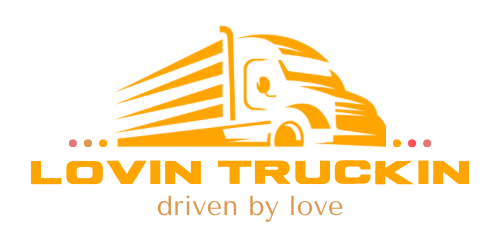


0 Comments